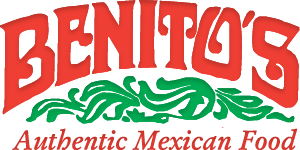4 Delicious Differences Between Authentic Mexican Food and Tex-Mex
Though Tex-Mex is delicious in its own right, there’s just something about authentic Mexican food which satisfies the soul.
However, it can be difficult to determine which restaurants are serving up the real deal and which ones are taking their inspiration from common North American ingredients.
It turns out that many of the Mexican dishes, which diners know and love, have roots in places quite far from Mexico.
Luckily, savvy eaters can determine whether or not their food really does come from South of the border by examining a few major differences in ingredients. Benito’s Mexican
4 Key Ingredient Differences in Authentic Mexican Food vs. Tex-Mex
Though the cuisine of Mexico varies greatly by region, there are still some aspects which make it stand apart from the Northern-infused fare of many American Mexican restaurants.
Finding authentic Mexican cuisine in Fort Worth can be a challenge (psst – Benito’s is 100% authentic!). However, knowing the key differences between traditional fare and Tex-Mex certainly helps.
1. Northern Spices vs. Southern Spices
It turns out that there’s an imposter hiding among the spices which adorn many a plate of chili con carne. The culprit is cumin, which isn’t native to Mexico at all. Cumin became popular North of the Mexican border in the United States only after being imported from India.
Its distinct and exotic taste quickly became all the rage in the States, but Mexico was more hesitant to adopt the spice. It does not appear in traditional recipes. After all, Mexican food has its own traditional spices, and they pack a mean flavor punch. Oregano, epazote, cacao, cilantro, and chili peppers characterize the rich flavors of authentic Mexican food.
2. White Cheese vs. Yellow Cheese
While most Tex-Mex dishes feature at least a little sprinkling of yellow cheese, this ingredient is not found in traditional recipes. Instead, dishes call for white cheese. In fact, most of the cheese in Mexico is white and includes such staples as queso fresco and queso cotija, among others.
If the cheese in the taco is yellow, it’s safe to assume that it’s a Tex-Mex taco. That also goes for that bowl of delicious gooey yellowness served in nearly every Mexican restaurant.
It may come as a surprise, but the popular yellow queso so beloved by so many Americans (and ordered in many a Fort Worth Mexican restaurant) is not Mexican in nature at all. Unless that cheese is white, consider it completely Tex-Mex. Check out our Benito’s Menu to see what color our queso is!
3. Wheat Flour vs. Corn Flour
The great starch debate sparks much controversy. Many people believe that flour tortillas are mainly used in Tex-Mex, and corn tortillas are more authentic. But the truth is a bit more complicated than that.
It’s a fact that authentic Mexican cuisine calls for corn tortillas in a big way. That’s because corn is a staple of the Mexican diet, and has been for thousands of years. There’s even evidence of the Aztecs using corn flour to make tortillas in 10,000 BC.
Eating true enchiladas means eating smaller corn tortillas which are packed with flavor, and can withstand all the handling which goes into creating them.
However, that doesn’t mean flour tortillas are inherently Tex-Mex. Mexicans themselves consume 7.8 million tons of wheat flour per year, 10 percent of which goes into making flour tortillas.
It also doesn’t mean that corn tortillas are 100 percent Mexican. Americans have a habit of stuffing ground beef (also a rarity in traditional Mexican cooking) into hard corn taco shells, which is definitely not done in Mexico.
4. Sweet Corn vs. Mexican-Style Corn
In many Tex-Mex dishes, you’ll find sweet corn kernels. In salads, on top of tacos, even in the pico de gallo. But in Mexico, corn isn’t used like that. Authentic Mexican cooking does not call for sweet corn kernels.
It’s either ground up into a flour or meal and used for cooking, or it’s served on the cob. Traditional Mexican street corn, called elote, is char-grilled and slathered in mayonnaise and cotija cheese before being served.
Try Tasty Alternatives at Benito’s – Your Authentic Fort Worth Mexican Restaurant
It’s not as if these two cuisines have nothing in common. Try authentic alternatives to popular Tex-Mex treats. For example, try and order Queso Flameado (found on Benito’s Menu) instead of creamy yellow queso dip.
If you’re craving a burrito, order tacos with flour tortillas instead. Flour tortillas get a bad rap, but they are traditional Mexican food — and quite delicious to boot.
Finding a Fort Worth authentic Mexican restaurant with all the right ingredients has never been easier, thanks to Benito’s. Diners who have familiarized themselves with all the staples of authenticity can rest easy, knowing they won’t have to compromise on flavor or satisfaction.






